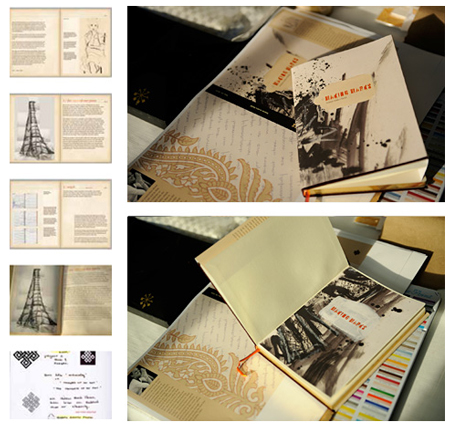Graphic design is the thread that binds my creative skills together. As purposeful visual communication, it interlocks image making, writing, drawing, typography, and far more. It is simple and elegant, intelligent and penetrating. At its best, it can transform its viewer. In Jessica Helfand’s words “design is complex combinations of words and pictures, numbers and charts, photographs and illustrations that, in order to succeed, demands the clear thinking of a particularly thoughtful individual who can orchestrate these elements so they all add up to something distinctive, or useful, or playful, or surprising, or subversive or somehow memorable.” My lifelong passion for graphic design is born in this premise. It gathers my background and skillsets together and allows me to lend a focused purpose to my voice.
–
The need to organize information is embedded in my DNA. It has manifested in countless projects—whether design-based or otherwise. I recall painstakingly laying out a research paper in primary school, meticulously ensuring that the writing and images were balanced and that the cadence of the narrative would function as intended. The same instincts have guided me through the work I created for deMO, Douglas+Voss, and numerous personal endeavors and custom commissions. Philip Meggs observed, “Since prehistoric times, people have searched for ways to give visual form to ideas and concepts, to store knowledge in graphic form, and to bring order and clarity to information. Over the course of history, these needs have been filled by various people including scribes, printers, and artists.” I have made books, studied and collected artists’ monographs, and obsessively read design theory since high school. I am, by Meggs’ definition, an image-maker, a scribe and an artist—all of which create a particular voice and offer an arsenal of skills that allow me to address creative questions in unique ways.
–
Past clients have included Dutchess Land Conservancy, Dutchess Day School, Bodsana Yoga, Hollow Brook Associates, Coker Farm, Hidden Brook Farm, Yellow Church Antiques, along with numerous collaborations with art directors Douglas + Voss and designers at deMO. While teaching, I have continued to compose layouts, sketch ideas, tell stories with pictures, make books and chronicle the world I inhabit. I obsessively make images, work them into narratives, and use them to make sense of both the personal and political. While living in New York, I made weekly trips to a women’s shelter, made portraits, and transcribed victims’ stories. These regular meetings culminated in a book that was subsequently used to raise awareness and funds. My relationship to the women at Grace Smith House continues today, as do many other connections formed during my working life. Graphic design has this power—to strengthen ideas and connections while making things happen. I love that.
–
In addition, my breadth of interests is an asset in the classroom. It allows me to understand students from varied backgrounds and provide them with tailored guidance. Graphic design attracts multiple majors—including illustrators, motion media designers, advertisers and photographers. Understanding the intersections that connect these many disciplines benefits everyone and opens more avenues for expression. An interdisciplinary approach allows for layers of visual assets that can come together to tell stories in new ways. For a young designer starting out, it means an open mind and an awareness of a limitless palette of available tools.
–
I love teaching. It makes my passion for graphic design concrete. In a very real sense, teaching is visual communication—from encouraging and moderating discussion to disseminating information in an organized, digestible form. I have enjoyed being the steward of a platform from which students can fuel their own passion for design and launch into careers with varied sets of skills. In Paul Rand’s words, “Design can be art. Design can be aesthetics. Design is so simple, that’s why it is so complicated.”
LCW / September 2014.
